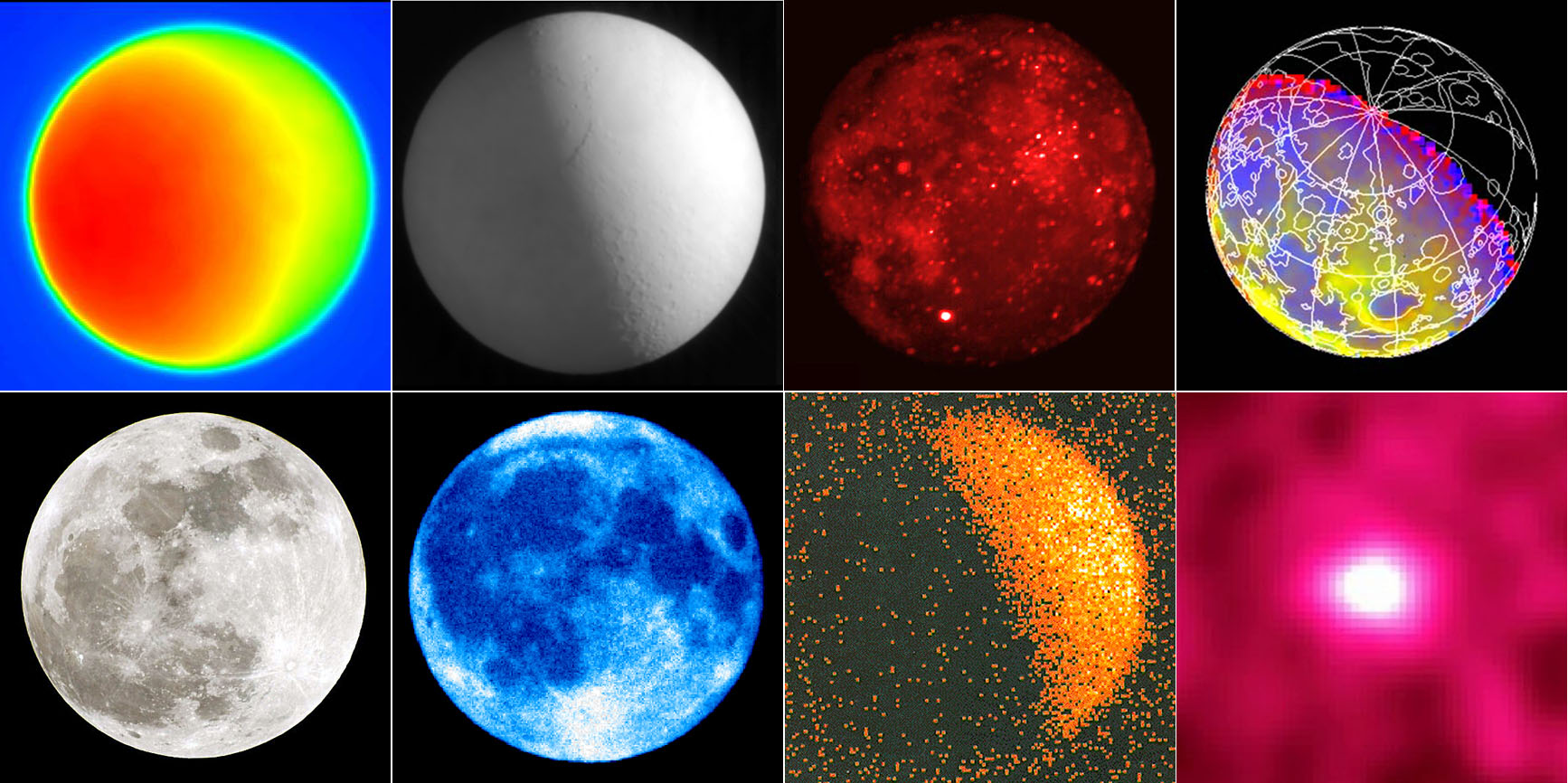You may know that the Universe is much more complex than we know. If you look at nearly anything in a different wavelength of light, new details can pop up that you’d never expect. Astronomers today use all the wavelengths of light to study the Universe.
Even the most seemingly boring objects can come to life in different wavelengths. As a prime example, take the Moon. Now I don’t find the Moon boring at all, in fact it’s quite interesting and has a lot of influence on the Earth, so its fun to talk about. But when we look at the Moon we see the same old thing, nothing new or surprising.
Well now there’s a compiled picture of the Moon in many different wavelengths. See anything interesting?

The wavelengths are as follows: Top row from left: Moon in radio waves, submillimeter light, mid-infrared, near-infrared. Bottom row: Visual, ultraviolet, X-rays and gamma rays.
What is ultimately interesting about this photo series is that we can see different features light up in different wavelengths. This allows astronomers to find all kinds of focal points for studying an object.
This works a lot better for more distant and massive objects in the Universe, such as Galaxies. Check out the different details in the Andromeda Galaxy:

A much bigger difference! Multi-wavelength Astronomy can teach us far more than a normal telescope can!

Where can I find this amazing image of the Andromeda Galaxy to put on my wall?
The composite image was done by a third party using telescope images from five different NASA spacecraft. I’d bet NASA images would have them!